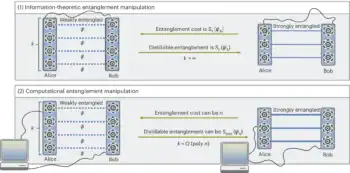
If vaccine is in short supply then it should be given out at well-defined, regular intervals. That is the conclusion of a group of physicists in the US and Israel, who have borrowed from the ideas of quantum mechanics to show that a periodic release of vaccine could significantly reduce the time it takes to wipe out a disease. Their preliminary results suggest that vaccinating just a small portion of the population could cut this time by 40% or more, depending on the population size.
With an unlimited amount of vaccine an infectious disease can be eradicated with certainty. However, a vaccine can be in short supply if it is expensive to produce, difficult to store or short lived due to the disease being able to mutate quickly.
In this scenario of limited vaccine it is not possible to deal with a disease comprehensively. Indeed, at first glance it would appear that only a small fraction of the population could be protected and that the remainder would be vulnerable. However, Michael Khasin and Mark Dykman of Michigan State University and Baruch Meerson of the Hebrew University of Jerusalem have worked out that just a small amount of vaccine can have a major impact in halting the spread of a disease.
Natural extinction
The idea, says Dykman, is to speed up the natural extinction of a disease – adding that it is unlikely, but not impossible, that a disease can disappear spontaneously. This process could take place within the limited confines of, for example, a classroom in which some pupils are infected and some are not. If, say, all of the infected pupils happen to sit in the same corner of the room and there is good ventilation in that corner then it is possible that the disease might not reach the healthy pupils.
During an epidemic, the competing forces of recovery and infection mean that the number of sick and healthy individuals can oscillate before finally settling to some fairly fixed number. Dykman and colleagues found that the chances of extinguishing a disease can be increased dramatically by vaccinating people at just the right time, even if there is only a limited supply of vaccine. The trick is to vaccinate when the infected are close to recovery, to minimize the probability that an infected and non-protected person come into contact. If the infected were mostly a long way from recovery then there would be a greater chance that non-vaccinated individuals would cross their paths before they have recovered.
In practice this means administering vaccines at well-defined intervals. Dykman and his colleagues found that the time it takes to wipe out a disease can be minimized by achieving a resonance within the system – matching the frequency with which the vaccine is administered to the natural frequency of oscillation between the numbers of sick and healthy. In other words, the idea is to apply vaccine pulses at those points within the cycle when a substantial number of the infected are close to recovery.
Particle in a well
Dykman says that the mathematics used to carry out this analysis are essentially those used to describe a particle trapped in a potential well. In such a system thermal fluctuations provide a small, but non-zero, chance that the particle can acquire enough energy to escape from the well. Vaccinating a small but finite fraction of the population is equivalent to slightly lowering the sides of the well. For the quantum particle, this relatively small reduction in the height of the well wall multiplies the probability that the particle can escape. Here the resonance is between the frequency with which the potential barrier is raised and lowered and the frequency at which the particle vibrates.
Dykman and colleagues have yet to model their periodic vaccination scheme using real-world data. But calculations show that vaccinating just a few percent of the population could reduce the time it takes to eradicate a disease from, say, five months to between three and four. They have, however, already produced one result with a concrete implication – that a mistimed periodic vaccination might actually make things worse if the disease in question varies seasonally, such as the common cold. In this case, the researchers found, the phase, as well as the frequency, with which the vaccine is administered is crucial. For a non-seasonal disease, by contrast, the phase would not be important and in fact the phase of the system would follow the phase of the vaccinations rather than vice versa.
According to Dykman there is still much work to do before he and his colleagues properly understand this periodic vaccination. “This is the first in a series of papers,” he says. “We were surprised by the resonance and are continuing to work on this. We also want to get access to real statistics, so that we can find out about disease evolution in self-contained communities, such as school classrooms or military barracks.”
A preprint of the paper is available at arXiv:1001.0170.



